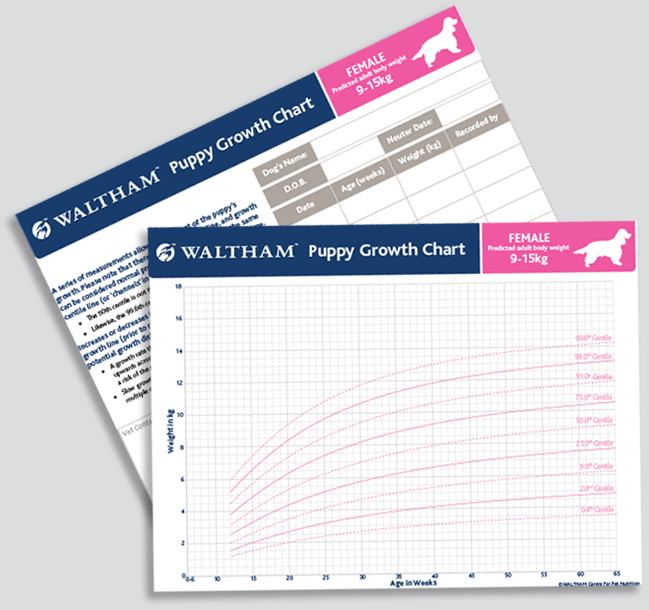5 Oct 2020
Study follows the release of a series of evidence-based growth standards from the Waltham Petcare Science Institute.

New research has highlighted the potential use of a weight-tracking tool to aid owners and vet professionals in keeping puppies’ weight on track from the minute owners bring them home.
The study from Waltham Petcare Science Institute – published in the journal PLOS One – suggests growth charts, much like those used to track growth in children, could help combat obesity in dogs.
The Waltham Petcare Science Institute has developed a series of evidence-based growth standards (charts), which were based on the bodyweight for five different size categories of dogs.
Following this, researchers from Waltham; the Banfield Pet Hospital in the US; University College London Great Ormond Street Institute of Child Health; and the University of Liverpool Institute of Life Course and Medical Sciences conducted a study to compare the growth curves depicted by this set of standards with the patterns of growth in dogs that were healthy, had abnormal body condition or had various diseases known to be associated with abnormal growth.

Data revealed 68% of dogs that developed obesity by three years old grew faster than the growth standards predicted. In contrast, 49% of dogs that became underweight by three years old gained weight slower than expected.
In humans, growth standards – such as those created by the World Health Organization – are used to monitor the growth of children by comparing an individual’s pattern of growth with that of a healthy reference population, helping health professionals identify growth disorders quickly.
The results from the study suggest these growth standards for dogs could be used in a similar way, helping pet owners and vets track the weight of a dog from puppyhood, and to intervene if its weight starts to creep up.
Darren Logan, Waltham Petcare Science Institute head of research, said: “Obesity is one of the major health concerns facing our pets today, and we are investing in research to explore ways veterinary staff and pet owners can better address it.
“These results suggest the growth standards (also known as puppy growth charts) are a useful tool for vets and vet nurses to help monitor healthy growth in dogs starting from when they are puppies. They can also be used to indicate a puppy’s ideal weight in adulthood, which will serve as a future reference.”
To view the growth charts – and for more information – visit Waltham’s website.